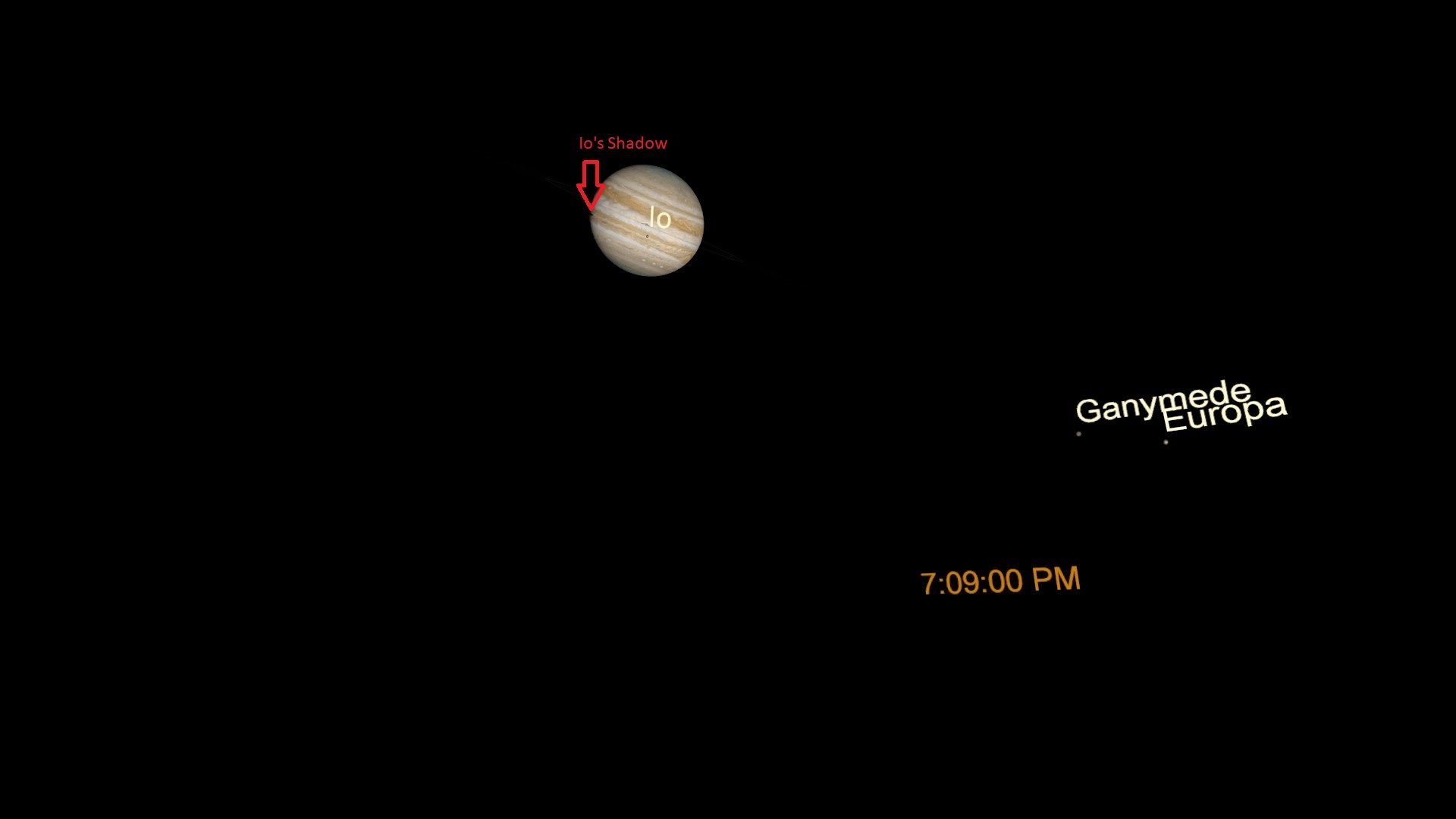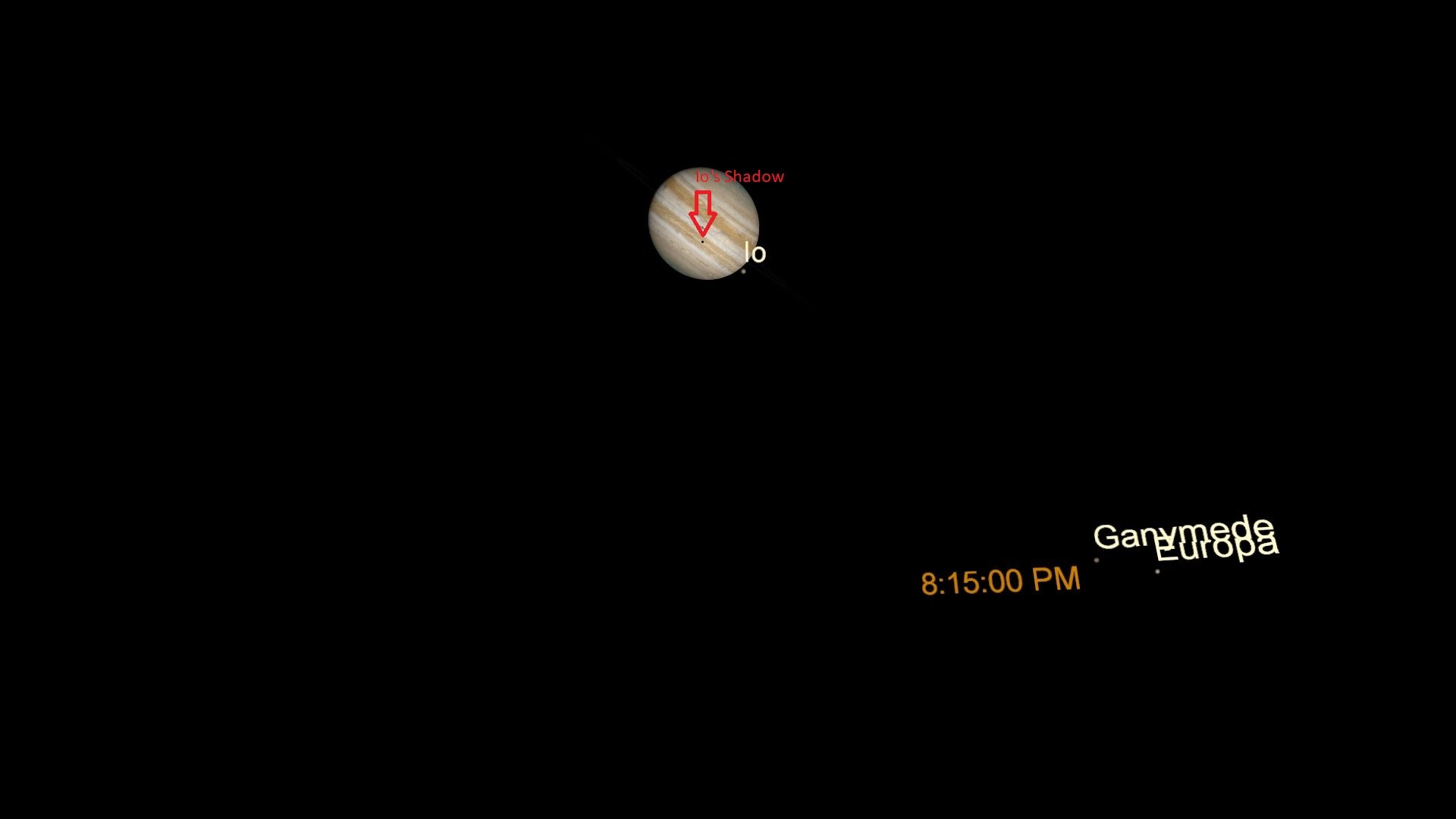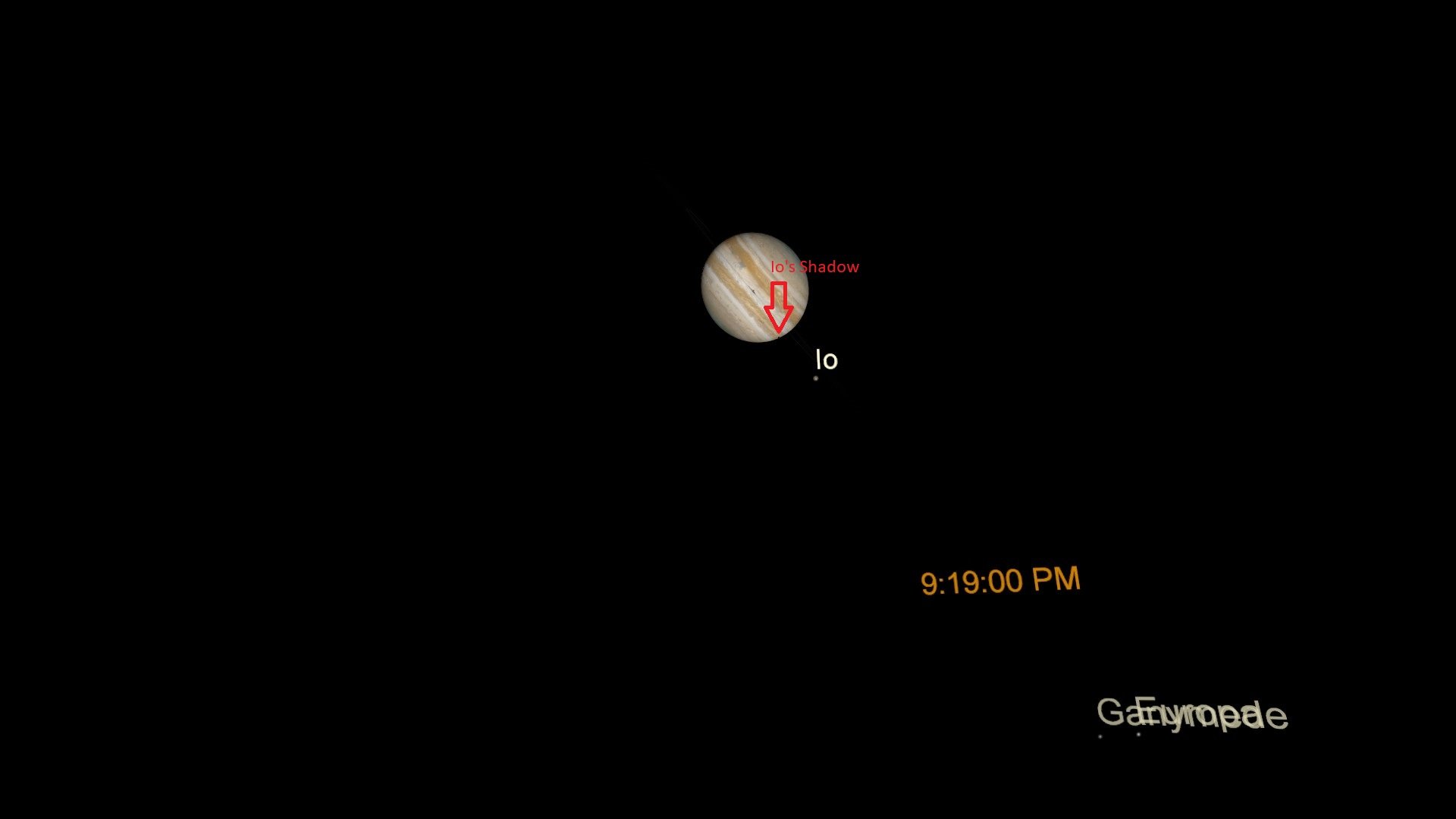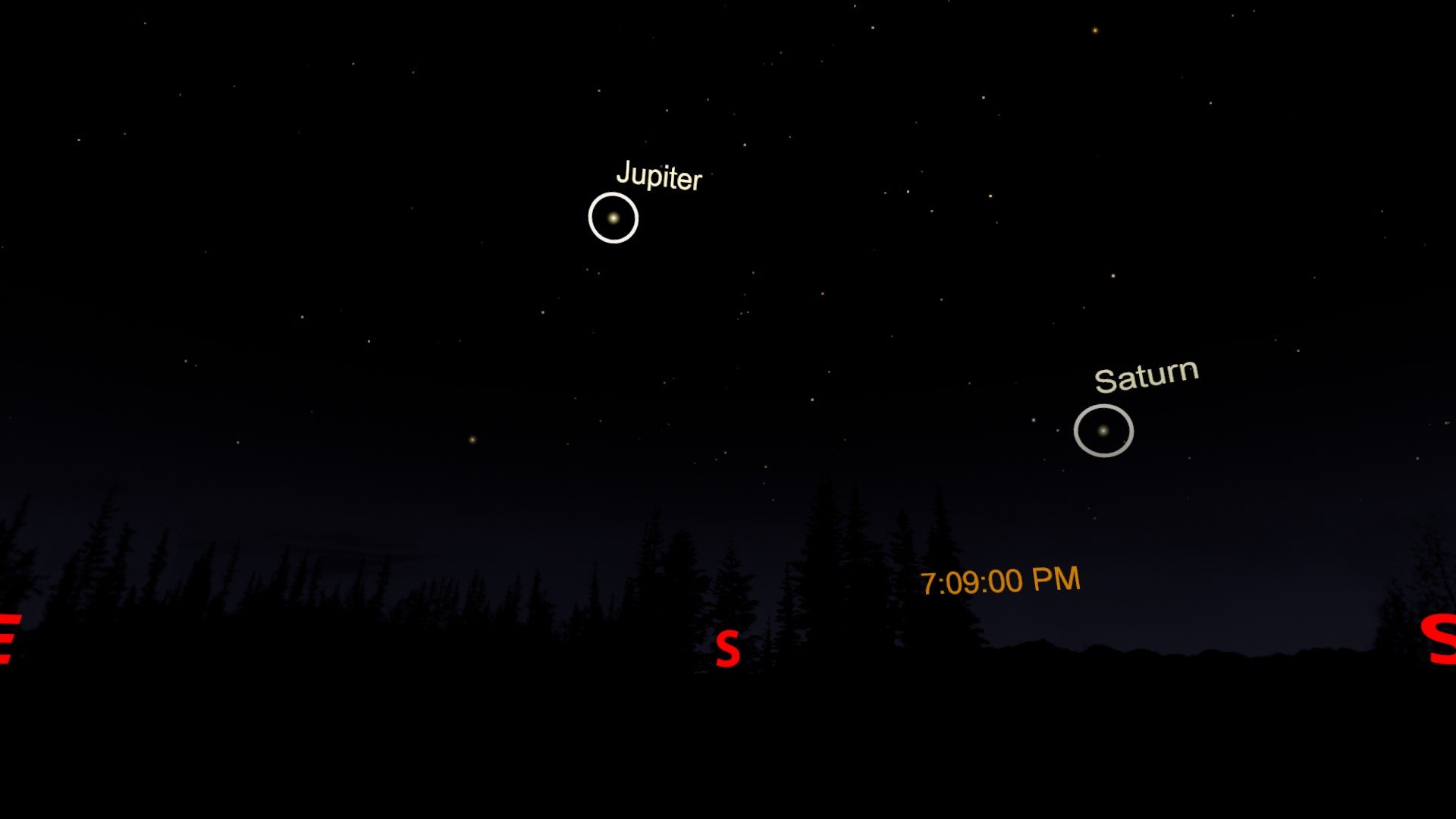Image credit: NASA/JPL/University of Arizona
After enjoying your Thanksgiving meal, grab your telescope and gather your loved ones to view Io as it passes in front of Jupiter.
Jupiter's closest moon, Io, will transit the gas-giant planet casting a shadow on its surface just after 7 pm EST on Thursday. Transits occur when an object, such as a moon, passes in front of another object, such as a planet, from our point of view. If you could travel to Jupiter and view the transit from inside the planet, you would be treated to a total solar eclipse!

While Io is in front of Jupiter, it will not be visible. However, you can watch as the shadow crosses the planet from left to right for about 2 hours.
By around 8:15 pm EST, Io's shadow will have traveled approximately halfway across the face of Jupiter. At this time, Io is no longer in front of the planet and may become visible as a bright "star" near the disc of the planet.

The shadow transit will end at 9:20 pm EST as Io's shadow crosses the right limb of Jupiter's disc.

Io is one of the four Galilean moons, named for their discoverer Galileo Galilei. It's slightly larger than Earth's moon but orbits much closer to the planet. It's so close to Jupiter that it whips around the planet at a blindingly fast 38,028 miles per hour! At this speed, it takes Io just 1.8 days to complete an orbit around the gas giant.
You will find Jupiter in the south shining much brighter than any star. Use the map below to help locate it.

If you catch the transit, share a photo with us on our social media @RUPlanetarium! Wishing you all a happy Thanksgiving and clear skies!